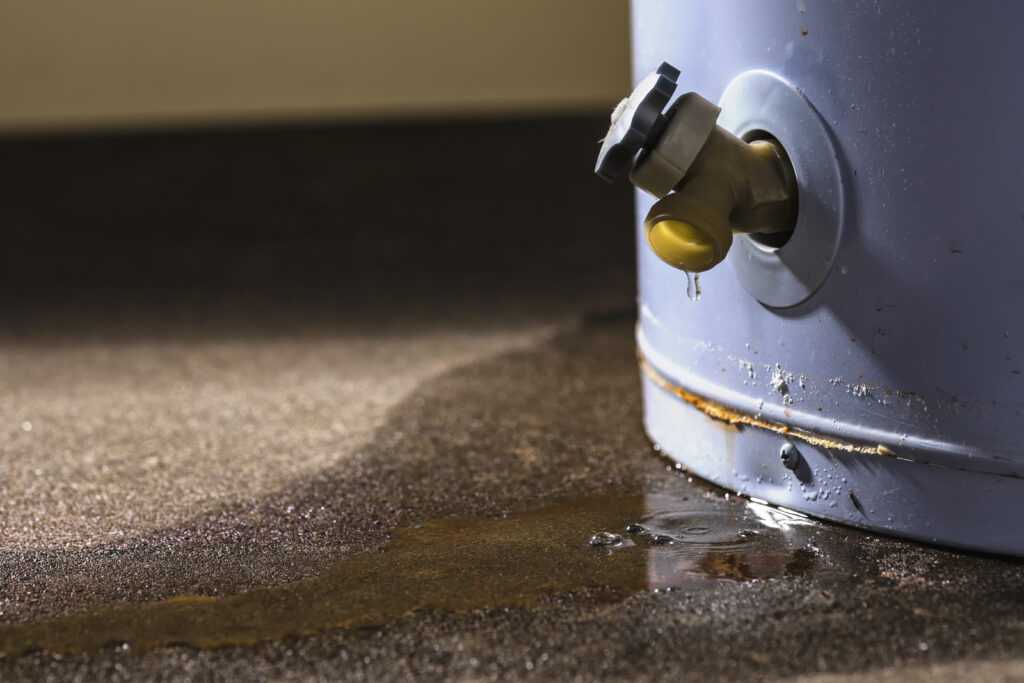
How to Find Water Heater Leakage and How to Fix
A leaking water heater is more than just a nuisance — it can lead to water damage, higher utility bills, and even mold growth if not addressed promptly. Whether you’ve noticed a small puddle near the tank or a steady drip, it’s important to take action immediately.
In this guide, we’ll cover how to identify the source of a water heater leak, common causes, repair options, and when it’s time to call in a professional plumber.
Step 1: Confirm the Leak Is from the Water Heater
Before assuming your water heater is leaking, do a quick inspection:
- Wipe down the tank and surrounding pipes.
- Check nearby appliances like washers or water softeners.
- Look for condensation on cold water pipes — not all moisture means a leak.
If water continues to pool at the base of the heater after drying the area, it’s time to investigate further.
Step 2: Turn Off Power and Water
Safety first. Before attempting any repairs:
- For electric water heaters, turn off the circuit breaker.
- For gas models, switch the gas valve to the “off” position.
- Shut off the cold water supply to the heater (typically a valve above the unit).
- If water is leaking rapidly, close the main water shut-off valve to your home.
Step 3: Identify the Source of the Leak
Water can leak from several parts of the heater. Here’s how to locate the problem:
1. Top of the Tank
Check the following:
- Cold water inlet or hot water outlet fittings
- T&P (Temperature & Pressure relief) valve
- Anode rod or expansion tank connection
These leaks are often due to loose fittings or worn washers.
2. Side of the Tank
Look at the:
- Drain valve (used to flush the tank)
- T&P relief valve discharge pipe
Drips here could indicate valve failure or excessive pressure buildup.
3. Bottom of the Tank
If water is leaking from the base:
- The internal tank may be corroded, which usually means full replacement.
- Drain valve might also be slightly open or faulty.
Step 4: Common Repairs
Once you’ve located the source of the leak, here are common fixes:
1. Tighten Loose Fittings
Use a wrench to gently tighten connections at the water inlet/outlet or expansion tank. Don’t overtighten, as this can cause damage.
2. Replace the T&P Relief Valve
If the T&P valve is leaking:
- Turn off water and power.
- Open the drain valve to release pressure.
- Unscrew and replace the valve with a matching part.
- Use Teflon tape on threads for a secure seal.
Note: If the valve is releasing water due to excess pressure, your thermostat may be set too high (over 120°F), or there may be an issue with your home’s pressure regulation.
3. Replace a Faulty Drain Valve
If water leaks from the drain valve:
- Use a hose cap as a temporary fix.
- Replace the valve entirely by draining the tank and unscrewing the old valve.
Choose a durable brass replacement to avoid future issues.
4. Address Tank Leaks
Unfortunately, if the tank itself is leaking, it’s likely due to corrosion and cannot be repaired. The only solution is to replace the water heater.
When to Call a Professional Plumber
While some minor leaks can be fixed DIY-style, call a licensed plumber if:
- You see rust-colored water or significant corrosion.
- The tank is leaking from the bottom.
- You’re uncomfortable working with electricity or gas lines.
- You’ve made repairs but the leak continues.
A plumber can perform a full inspection and determine if repair or replacement is the best option.
How to Prevent Future Leaks
Preventative maintenance goes a long way:
- Flush the tank annually to remove sediment buildup.
- Inspect the anode rod every 2-3 years — this rod prevents corrosion inside the tank.
- Check for signs of rust or dampness during seasonal maintenance.
- Install a leak detector or smart shutoff valve near the heater.
- Ensure proper water pressure in your home (ideally between 40–80 PSI).
Regular upkeep can extend the life of your water heater and minimize the risk of leaks.
Should You Repair or Replace?
Here’s a quick breakdown to help you decide:
Conclusion
A leaking water heater in Indianapolis is not something to ignore. Acting quickly can save your home from water damage and extend the life of your system. Whether it’s a loose valve or a failing tank, knowing how to diagnose and address the issue will help you stay in control.
If you’re ever unsure or facing a major leak, don’t hesitate to contact a professional plumber. A fast, accurate repair today can prevent costly problems tomorrow.


